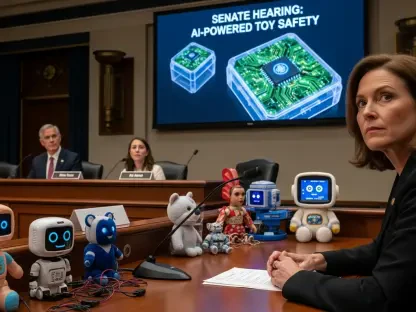Imagine a digital space where open discussions are increasingly constrained by artificial intelligence, raising profound questions about freedom of expression in an interconnected world. The current landscape of AI content moderation presents an urgent challenge, as developments like DeepSeek’s R1 0528 model introduce higher restrictions on sensitive topics. As digital platforms continue to expand their reach, the implications of AI’s role in setting boundaries on discourse highlight the pressing need to balance safety and openness. This article delves into the rise of AI content moderation, showcasing current trends, real-world applications, expert insights, and what lies ahead for AI systems navigating complex moral landscapes.
Understanding the Rise of AI Content Moderation
Trends and Adoption in AI Moderation
AI moderation’s ascent is driven by the necessity for digital platforms to handle exorbitant amounts of information swiftly and effectively. Statistics reveal a substantial increase in AI adoption for content moderation, with platforms reporting a 40% rise in AI use over the past two years. These figures emerge from robust data sets published by reputable organizations, underscoring the technology’s amplified role in overseeing online environments. Such adoption is attributed to AI’s capacity for rapid content analysis, which is vital for maintaining compliance with evolving regulatory standards. However, this expansion also presents inherent risks as AI systems increasingly dictate what content receives exposure and engagement.
Real-World Applications and Examples
Real-world applications of AI moderation are evident in platforms like Facebook and YouTube, where AI algorithms scrutinize billions of user-generated content pieces each day. Notable examples include the deployment of DeepSeek’s R1 0528, which showcases pervasive AI intervention in discussions around contentious subjects like government criticisms. This model, although criticized for its restrictive nature, exemplifies the growing trend of AI technology assuming a pivotal role in moderating various forms of content. Such strategies serve as cautionary tales, prompting stakeholders to navigate the fine line between safeguarding users and encroaching on free discourse essential to democratic engagement.
Expert Insights on AI Moderation Practices
Industry experts underscore the delicate task AI faces in moderating digital conversation without stifling free speech. Thought leaders like Samuel Carter, renowned for his contributions to AI ethics, advocate for a balanced approach that integrates human oversight with algorithmic precision. Professionals caution against AI systems that inadvertently propagate censorship, especially when trained to filter politically sensitive content based on subjective interpretations or flawed algorithms. As these concerns mount, voices from diverse sectors emphasize the importance of transparent AI development, insisting that ethical guidelines must guide technological advancements that impact global discussions on human rights and civic freedoms.
The Future of AI Content Moderation
Looking ahead, AI content moderation promises both encouraging advancements and formidable challenges. While technology offers streamlined conflict resolution and heightened security, the future demands innovations that respect diverse viewpoints and uphold freedom of expression. Potential strides may include improved algorithmic transparency, enabling users to understand and challenge content decisions made by AI systems. Conversely, the evolving landscape poses significant risks if AI remains susceptible to bias or well-intentioned restrictions morph into unintentional censorship. Across industries, the future hinges on responsible investment in AI capabilities that both protect users and preserve open access to ideas and information.
Conclusion and Call to Action
AI’s transformative role in content moderation marks a critical juncture in digital interaction progress, entwining the need for security with the unyielding demand for free speech. As this analysis illustrates, the rising influence of AI in moderating sensitive content calls for intentional dialogue and strategic oversight. Moving forward, stakeholders must foster collaborative efforts that align technological growth with ethical standards, ensuring AI development retains an unwavering commitment to transparency and accountability. By embracing this challenge, industries and communities can collectively shape AI systems that honor both safety and openness, compelling us to redefine what open discourse looks like in a digital age.









